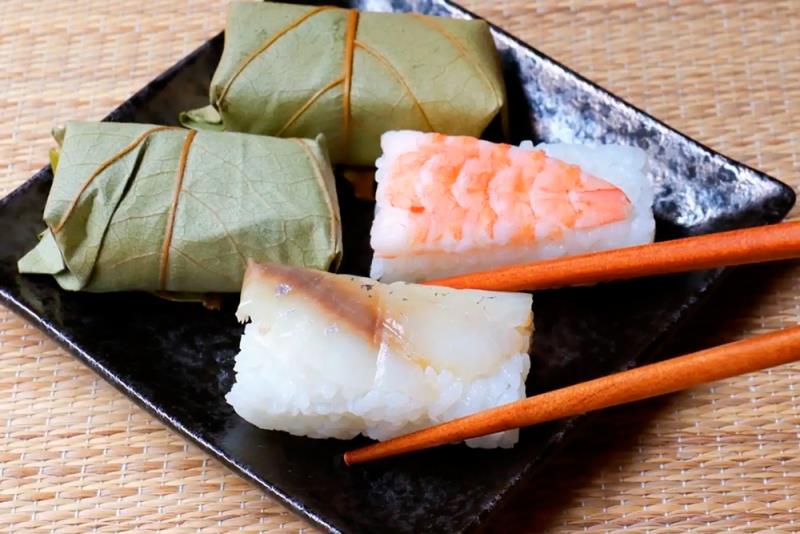Culture of persimmon leaf sushi
| |
Ever since Nara was the capital, eating seafood has been a “deep desire” of the people of this capital. Ingenuity brought seafood from the distant seas, making it possible to eat delicious seafood even in Nara.
|
|
| |
The Mystery of Persimmon Leaf Sushi
Why Sushi?
Sushi was originally a method of fermenting and preserving fish and shellfish called narezushi. Older types of narezushi, such as funa sushi in Shiga Prefecture, can be called pickled fish. Many such sushi are also written on wooden tablets excavated from the ruins of Nara’s Heijō-kyō palace complex. It was after the Edo period (1603 – 1868) that the nigiri sushi type familiar to people today was created. This sushi is not fermented, but gives the impression of having been fermented, because vinegar has been mixed with hot rice to give it a sour fermented flavor. Persimmon leaf sushi is an intermediate type between today’s nigiri-type sushi and narezushi. Even now, it is said that persimmon leaf sushi is best eaten after waiting a day or so, rather than immediately after it is made. Some people say that it tastes better 2 to 3 days later. Long ago, when persimmon leaf sushi was made in villages and households during summer festivals, it was said that it was best eaten after 4 to 5 days, and that it could last for 10 days or even a month, eaten even if it had become moldy. This is how persimmon leaf sushi evolved from narezushi to early sushi.

|
|
| |
Why wrap sushi in persimmon leaves?
The culture of wrapping rice, sushi, rice cakes, etc. in plant leaves has been widespread in Japan and around the world since ancient times. The leaves used for wrapping, and their contents, reflect what is available in nature in a region. Nara, too, has a culture of wrapping food in plant leaves.
Why persimmon leaves? Because they were readily available. You might think that the persimmon tree is found everywhere in Japan, but Nara is known for its persimmon production. To make enough persimmon leaf sushi to eat at a summer festival, we need a large amount of persimmon leaves. In some places, children were responsible for collecting persimmon leaves before festivals. During the summer festival season, persimmon leaves are fresh, tough, and flexible enough to use in wrapping sushi. It is said that persimmon leaves have a preservative effect, but a more likely reason they were used may be that they were easily had at the time the summer festivals were held.
|
|
| |
If there is no access to the sea in Nara,
where did the mackerel come from?
Mackerel is a common fish that has been eaten since ancient times. We know from wooden tablets that mackerel was brought to the capital of Nara from both coasts, the Sea of Japan and the Pacific-side Ise Bay. It is thought that during the Edo period (1603 – 1868), when persimmon leaf sushi was first introduced, mackerel was sourced primarily from the Kumano Sea in the Kishu region, located to the south of Nara Prefecture. Salted mackerel was transported from the Kishu region to Nara over a mountain pass, by riverboat on the Kumano River or on foot over a two-day period. In Kawakami Village, this salted mackerel was called, Kumano-mon (from Kumano). Nara was the “crossroads of mackerel.” It, and other seafood, converged here from all directions of the compass.
|
|
|